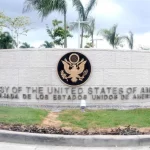China averaged 29 chemical accidents per month so far this year: Greenpeace

Beijing.- 232 chemical-related accidents occurred in Chinafrom January to August 2016, an average of 29 per month, according toGreenpeace East Asia’s ‘China Chemical Accidents Counter’. The accidents caused199 deaths and 400 injuries. The findings demonstrate the lax management ofChina’s chemicals industry, the world’s largest. In addition, preliminaryfindings from Greenpeace East Asia’s chemicals industry distribution mappingshows a worrying correlation of facility location and population density, aswell as proximity to ecologically sensitive areas. Greenpeace calls on theChinese government to radically overhaul the current chemicals managementsystem and introduce greater transparency.
“China’s chemicals industry is the largest in the world,but it is appallingly under-regulated,” said Greenpeace East Asia toxicsAssistant Manager Cheng Qian.
“Tragic accidents occur on an almost daily basis. Thegovernment must take urgent action to manage chemicals in a sound manner,provide a safety net for workers and citizens, and protect ecologically importantareas across the country.”
Greenpeace East Asia’s Accident Counter compiles publiclyavailable information on chemical accidents from the official websites of theState Administration of Work Safety and the China Chemical Safety Association,supplemented by monitoring of news sources. The data is not exhaustive and itis more than likely that more accidents than those recorded in the abovesources have occurred.
Analysis of the data set shows that 43% of accidents occurdue to leaks, while fire and explosions account for 27% and 16% of accidents,respectively. The data also shows that 52% of accidents occur duringtransportation of chemicals, while 27% occur during production.
Using GIS mapping technology and the latest available dataon 33,625 chemical facilities, Greenpeace can also show that the majority ofchemical facilities in China are concentrated in the densely populated east.
The mapping shows that nearly 84% of facilities are locatedoutside of State Council’s 60 designated ‘priority counties for safetyproduction management’. Nearly 18% of facilities are located in core ecologicalspace.
The mapping relies on publicly accessible data from2010-11. The fact that the latest data on chemical facilities’ locations isover five years old highlights the lack of transparency in the industry. Thenext stage of the mapping will enable the updating of this data set via userparticipation and public oversight.
“Introducing transparency and public scrutiny to theindustry is the first step towards safety,” said Cheng Qian.
Greenpeace urges the Ministry of Environmental Protectionand the State Administration of Work Safety to improve transparency in China’schemical industry. Chemicals management policy must be thoroughly reformed andrecognise the intrinsic hazards of chemicals to ensure not only productionsafety, but also health and environmental safety. In addition, chemicalsfacilities should be moved away from urban and environmentally sensitive areasin order to minimise risk and hazardous chemicals should gradually be replacedwith safe alternatives.

















